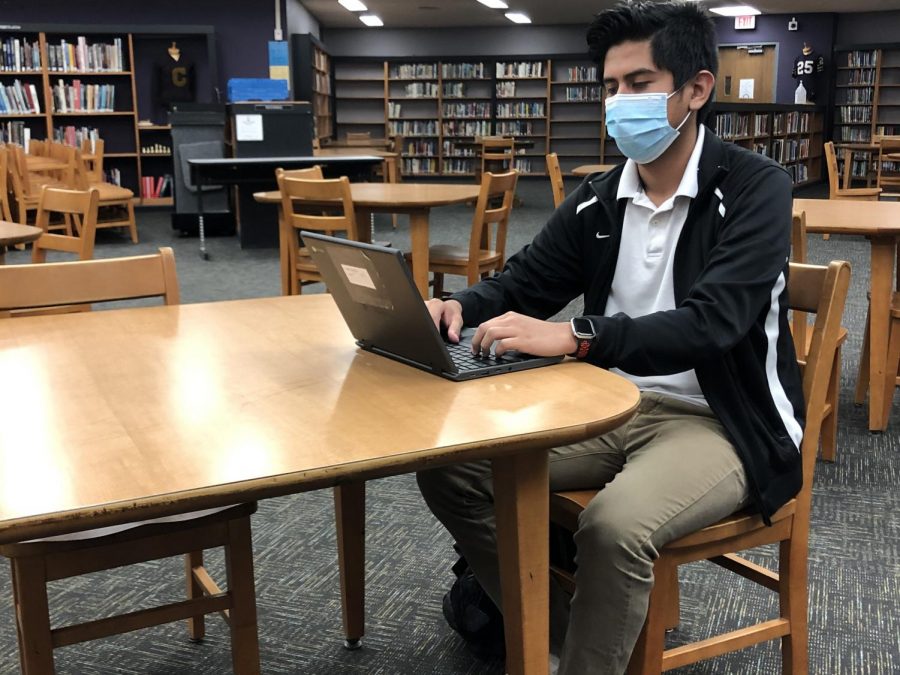For years, reports have been made on the negative effects of increasingly sedentary lifestyles. Long school days that only require a student to move around at class change four times a day may be dangerous for students in the future.
Out of those that responded to a survey, 59% of Central teachers noted that their students seem more lethargic and less motivated after long periods of sitting. This could be a result of long class periods, but LeAnn Shurette, P.E. and weight training teacher, explained there would be much more flexibility if teachers did not have to address their students on Zoom and in-person.
“I think the longer class period allows for more time to do different activities and get kids and myself up and moving. In the shorter classes everything is so rushed; I have no time to get to know my students. The long classes are not the problem. Staying on zoom is,” voiced Shurette.
Having students on Zoom also requires teachers to stay close to their computer, no matter how active their teaching style would have been in the past. In the same survey, 37% of teachers reported feeling more stiff/less energetic due to extended periods of sitting; 37% of teachers reported that they walk around often while teaching, and the remainder reported they felt no change.
“I sit now more than I used to being on zoom. [I am] definitely stiff,” said Algebra II Teacher Peggy Moyer.
Students have also noticed a difference after sitting for extended periods of time.
“I have noticed that I sit down a lot, but it doesn’t seem to bother me that much. I do stand up during class without noticing though…uninterrupted classes [do] feel…emotionally and mentally draining and it has me staring at the clock nonstop,” said Junior Messiah Partridge.
Although, Central has used a block schedule (four periods a day, four different classes each semester) in the past, it is new to Central’s current students who are accustomed to the traditional schedule (seven periods a day with the same periods all school year). Those who are noticing themselves feeling differently may come to the conclusion that the block schedule is the issue. However, the block schedule is not the problem. Reports have shown that an increasingly sedentary lifestyle is damaging to a person’s health.
“[The survey] demonstrated that postmen who cycled or walked to deliver mail had fewer CAD events when compared with workers engaged in less intermediate physical activity (counter-hands, postal supervisors, and higher grade postmen) and their more sedentary counterparts (telephonists, civil service executives, and clerks),” the BC Medical Journal explained.
This evidence suggests that it does not only take daily workout sessions in order to remain healthy, but a build up of small efforts to be active throughout the day; however, these efforts do not decrease the importance of a person’s workout regimen. To take this evidence and support it with actions is difficult considering how long classes and school work encourages to sit at a time.
A popular study method is a practical way to take brain breaks and encourage activity throughout the day: the pomodoro study method. “Pomodoro” translates to “tomato” in Italian, but these tomatoes are not the edible kind. It encourages tasks to be broken up into 25 minute segments, including five minute breaks afterwards. The method also suggests that after four pomodoro segments to take a longer 15-30 minute break. These breaks can be used for stretching, hydrating, talking with a friend, walking around, or simply relaxing.
Brain breaks are not just to benefit students in a mental capacity, but they also benefit students in a physical capacity as well. Encouraging breaks in work during the school day is a simple way to reduce stiffness, and benefit students in the long run.
This story was originally published on The Central Digest on March 22, 2021.































![IN THE SPOTLIGHT: Junior Zalie Mann performs “I Love to Cry at Weddings,” an ensemble piece from the fall musical Sweet Charity, to prospective students during the Fine Arts Showcase on Wednesday, Nov. 8. The showcase is a compilation of performances and demonstrations from each fine arts strand offered at McCallum. This show is put on so that prospective students can see if they are interested in joining an academy or major.
Sweet Charity originally ran the weekends of Sept. 28 and Oct. 8, but made a comeback for the Fine Arts Showcase.
“[Being at the front in the spotlight] is my favorite part of the whole dance, so I was super happy to be on stage performing and smiling at the audience,” Mann said.
Mann performed in both the musical theatre performance and dance excerpt “Ethereal,” a contemporary piece choreographed by the new dance director Terrance Carson, in the showcase. With also being a dance ambassador, Mann got to talk about what MAC dance is, her experience and answer any questions the aspiring arts majors and their parents may have.
Caption by Maya Tackett.](https://bestofsno.com/wp-content/uploads/2024/02/53321803427_47cd17fe70_o-1-1200x800.jpg)
![SPREADING THE JOY: Sophomore Chim Becker poses with sophomores Cozbi Sims and Lou Davidson while manning a table at the Hispanic Heritage treat day during lunch of Sept 28. Becker is a part of the students of color alliance, who put together the activity to raise money for their club.
“It [the stand] was really fun because McCallum has a lot of latino kids,” Becker said. “And I think it was nice that I could share the stuff that I usually just have at home with people who have never tried it before.”
Becker recognizes the importance of celebrating Hispanic heritage at Mac.
“I think its important to celebrate,” Becker said. “Because our culture is awesome and super cool, and everybody should be able to learn about other cultures of the world.”
Caption by JoJo Barnard.](https://bestofsno.com/wp-content/uploads/2024/01/53221601352_4127a81c41_o-1200x675.jpg)






